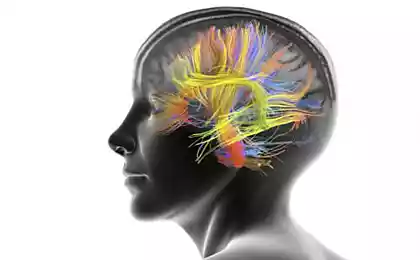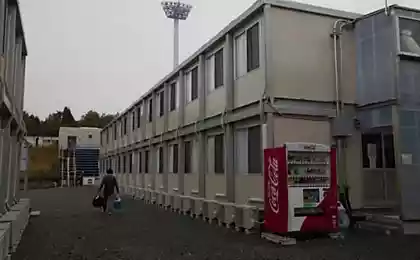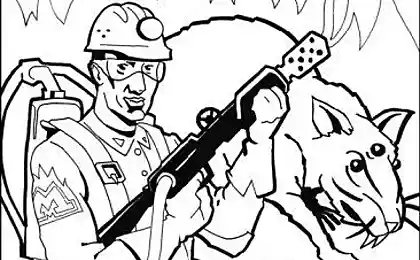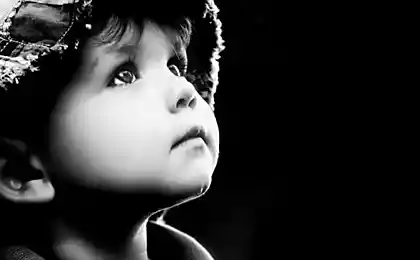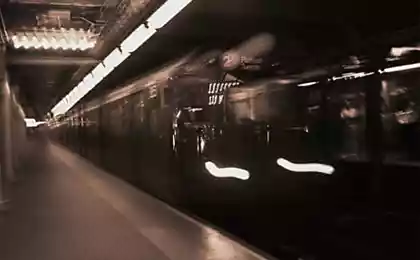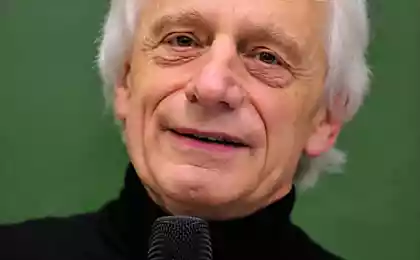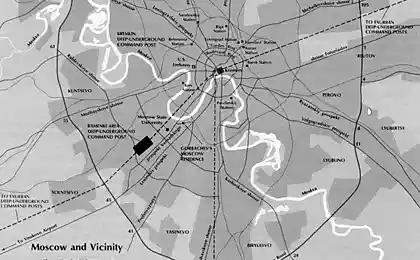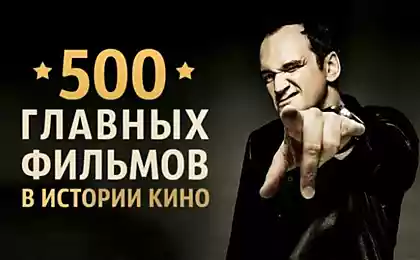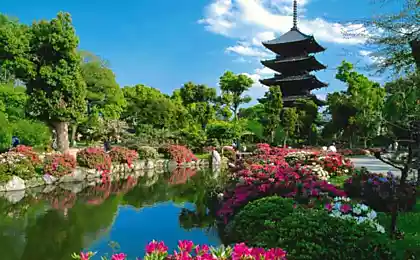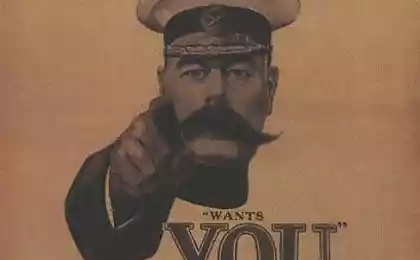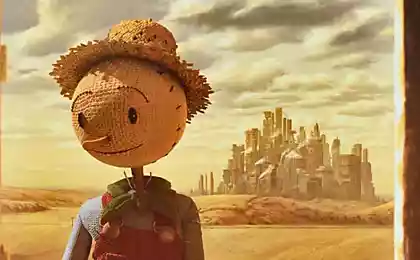1649
Rules of conduct in the Japanese subway
It would seem: the subway - it is in Africa subway. But in fact, between the subway there are many differences, national identity, even its culture. Here we have a boring "Rules underground" that few people read. But the Japanese have good manners in the subway was devoted to a series of colorful posters. They are represented on the site about the history of propaganda. Japanese first subway started its work on 30 December 1927, when a private company, "the Tokyo underground railway" has opened the first line of the subway stations in the capital between Ueno and Asakusa throughout the 2, 2 km.
First of all, we should note one rather important point: the subway in Japan have never belonged to the state, although not so long ago the railways in Japan were mostly state-owned. Accordingly, the money for the construction and operation of underground never allocated from the state budget, so that the Japanese government has never had a headache about where to get the money, so necessary for the development of the metro.
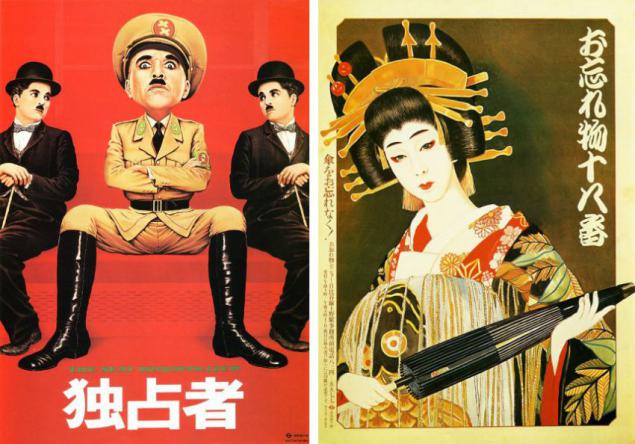
First Line Ueno-Asakusa was subsequently extended to Ginza, and in 1939 - further to Shibuya. So even before the Second World War there was the Ginza line with 14 stations - from Shibuya to Asakusa. Soon after Tokyo, namely in 1933, the subway was built in Osaka, then the second largest city in Japan. Other contenders for its own subway to the Second World War, Japan has not appeared.
After the war, Japan was clearly not up to the expensive construction, especially after the defeat of Japan. But with the end of the occupation period, the underground began to build on. The next was the Marunouchi line, which was opened in the 50s. She connected the Shinjuku and Ikebukuro through the city center. Laying the entire Marunouchi line with 24 stations it was completed in 1962.
Japanese experts have identified two features of the metro in Japan:
1) Most of the comparatively recently constructed lines is designed in such a way that they can be connected with railway lines, reaching the surface of the earth, and commuter trains entering the city limits, often dive into the ground, using the subway rails.
2) Most subway construction less costly way - from the surface. Top excavated tunnel is closed with steel sheets, which is road transport. It facilitates access to tunnels for repair. But depending on the terrain and tunnels can be routed tunneling shields, displaying the train to the surface, where there is for that vacant lots, and where not - to the elevated overpass. Hence the name "Subway" toward Japan is not always justified.
As of 2003 g. Tokyo was 13 subway lines with total length of 286 km 2, is the third largest metro network in the world.
Nine of the thirteen lines of management in charge of Teito Rapid Transit (Aidan). Aidan - a special corporation established by the government and the municipal government of Tokyo. The other four lines in charge of municipal gov- ernment Tokyo (Toei). In the 23 administrative districts of Tokyo Station 224 - an average of one station per 1, 66 sq. km Capital Territory. Of course, in the central areas of the city, some subway lines converge and intersect, so there are more stations are located close to each other.
Such a large number of lines, typically allowing drive close enough to the desired location. You can change from one subway line to another, or from subway lines to suburban train of private railway companies and "East Japan Railway Company" (JR). This makes commuter trip comfortable, with the only exception that the network configuration and the transitions between the lines is often tortuous and confusing. For example, in a straight line from the station Nagatatё (line Yurakucho) station Akasakamitsuke (Tokyo Metro Marunouchi Line) just 250 meters away, but the transplant from one station to the other will have to walk 500 meters and traverse the platform of another station called Nagatatё on line Hanzomon. Published a number of books with recommendations for re cages with one line to another in this handy, although the complex network of the metro. When traveling in different lines do not always have to change, because many subway trains and suburban trains of different companies provide direct connections to each other lines. For example, the Hanzomon subway line connects to line Tokyu Teng-en Toshi in Shibuya, Chiyoda subway line - the line Dzёban JR in Ayase, and the Toei Mita subway line and Nanboku - to Tokyu Meguro line at Meguro. Direct trains that connect the metro line to railway lines of private companies and JR, relieve many passengers the inconvenience transplant in suburban trips.
I imagine posters promoting good manners, which appeared in the Tokyo subway in 1976 and 1982.
Three monster annoying trains
October 1982
Three monster annoying trains depicted on the poster, it Næss (Nesshii, sleeping monster) Assy (Asshii, monster zakinuvshee his legs) and Simbunsy (Shinbunshii, monster reading a newspaper).

Do not throw chewing gum on the platform
September 1976
Even Superman can not cope with chewing gum thrown on the station platform.

Invader
July 1976
Inspired by Charlie Chaplin film "The Great Dictator", this poster encourages passengers not to take up more space than necessary.
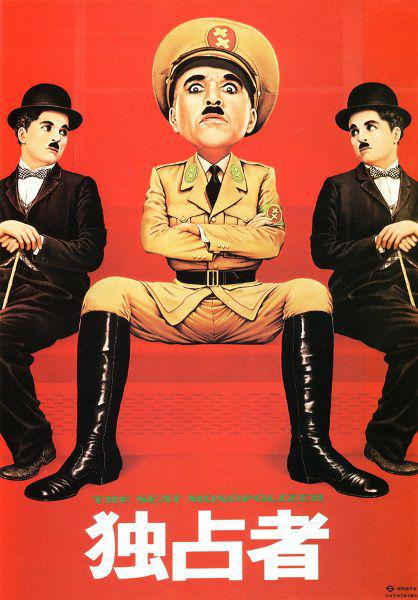
Do not forget your umbrella
June 1977
This poster girl of the upper class agemaki (Agemaki) from the representation of kabuki "Sukeroku» («Sukeroku»), about which said that at her breathtaking beauty men forget everything urges passengers not to forget the umbrella when leaving the car.
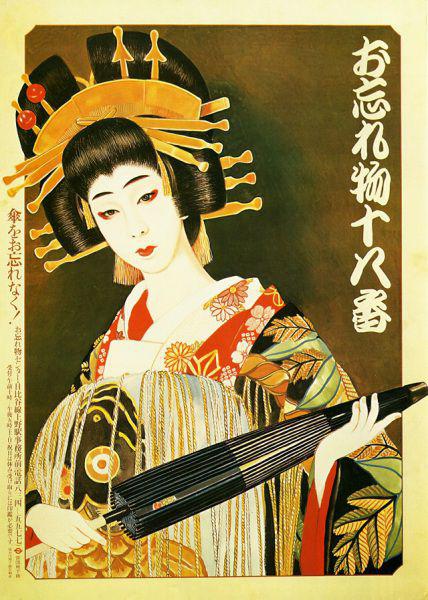
Space Invaders
March 1979
This 1979 poster pays tribute to the extremely popular arcade video game "Space Invaders» («Space Invaders»), and calls for the passengers to read newspapers without invading the personal space of other passengers.
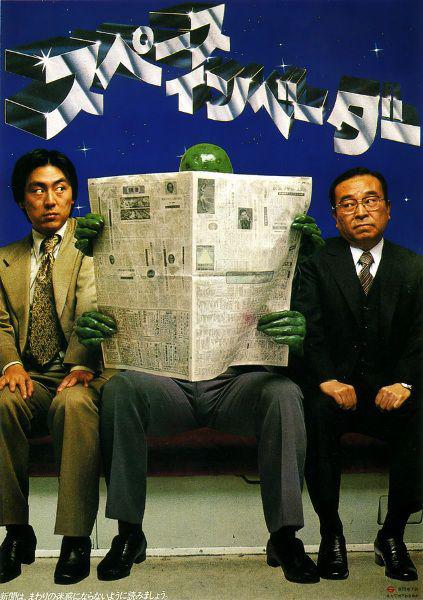
Isami-asi (Isami-ashi): Wait for the white line
May 1979
The image of sumo wrestlers, frozen in battle, reminiscent of the passengers that they were waiting for a train in a safe area of the white line.
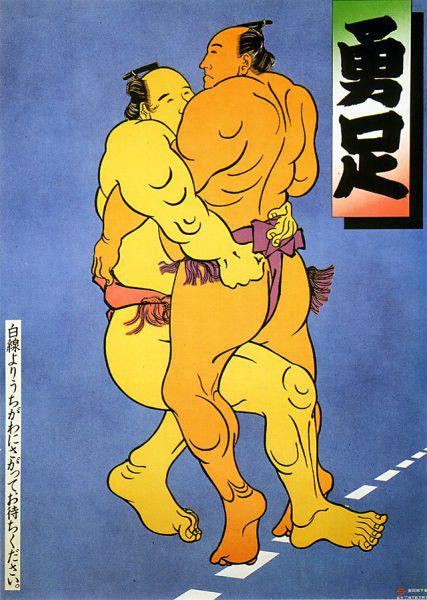
Do not forget the umbrella
October 1981
The text at the top of the poster - depicting Jesus cluttered umbrellas at the Last Supper - reads: "Kasane-gasane Kami-dan» («Kasane-gasane no kami-danomi»), literally, "I pray to God for help again and again." The poster plays with the similarity of the words "Casa" (Umbrella) and "Kasane-gasane" (again and again).
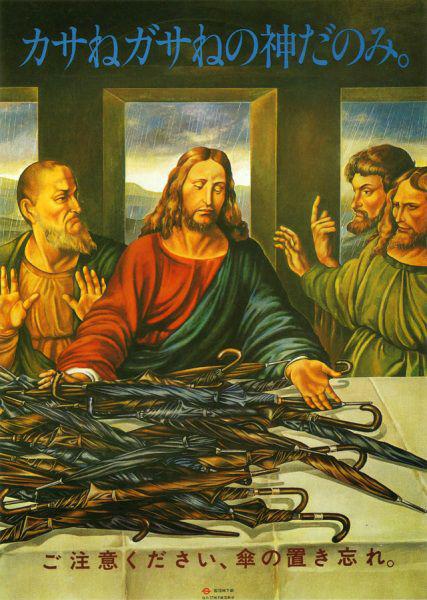
Pinch, dammit! (Shimatta)
March 1977
This poster warns passengers from getting bags they carry on his shoulder in the closing doors of the train.
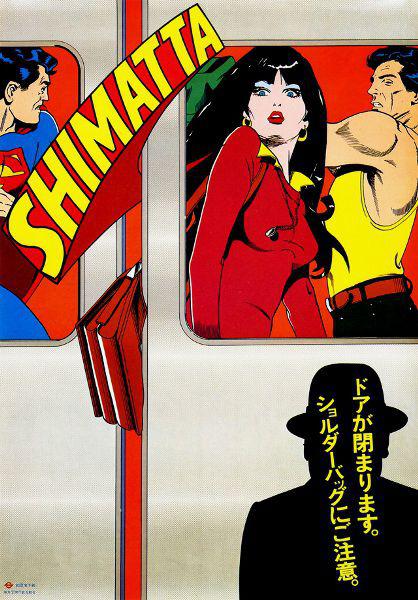
Coughs platform
January 1979
Painted in the style of paintings by Henri de Toulouse-Lautrec, the poster entitled "Hoomu de Concon" (coughing on the platform) - warns passengers that they did not smoke on the platforms of stations installed during "hours without smoking" (from 7 to 9-30 and from 5 am to 7 pm). The poster plays with the similarity of the words "Concon" (sound of coughing) and "Cancan" (a French group line dance).
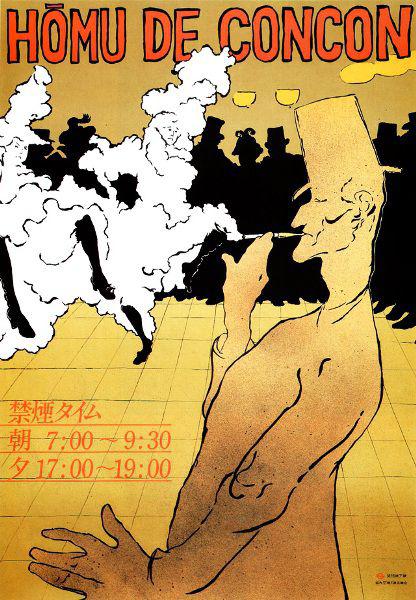
Sleep Home
December 1981
This poster of Doraemon, dressed as Santa Claus, encourages people who are sucking on Christmas or New Year, do not fall asleep on the train.
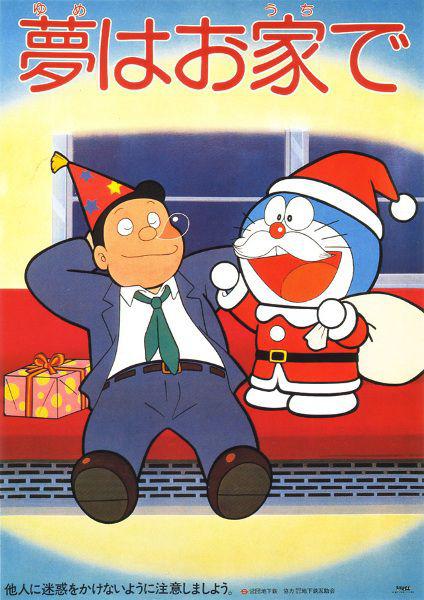
Not thinker
May 1981
Image version of sculpture by Auguste Rodin "Thinker" with a foot that was cast on the leg, encourages passengers to sit so as not to disturb other passengers.
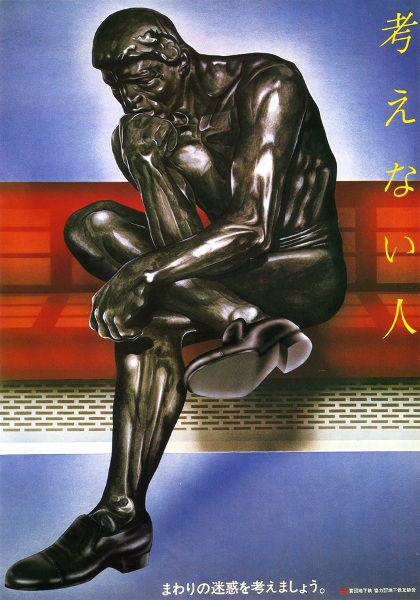
Kappa
August 1979
Image kappa (water) on the background of a burning cigarette resembles no smoking on the platform at the time set by "hours without smoking" (from 7 to 9:30 am and from 5 to 7 pm). The text at the top of the poster reads "Gaman Gora wa hae but kappa» («Gaman gurai wa he no kappa»), which roughly translates as "Wait - is not that a problem».

Umbrellas, forgotten in the subway
June 1976
This poster with Marilyn Monroe reminds passengers not to forget the umbrella when they go out of the train. The text in the top right corner of the "Kaeradzaru Casa» («Kaerazaru kasa», «Umbrella, which is non-refundable") plays "Kaeradzaru Cava» («Kaerazaru Kawa»), the Japanese name "Rivers without current reversal", a film in 1954 with Marilyn Monroe in the lead role.
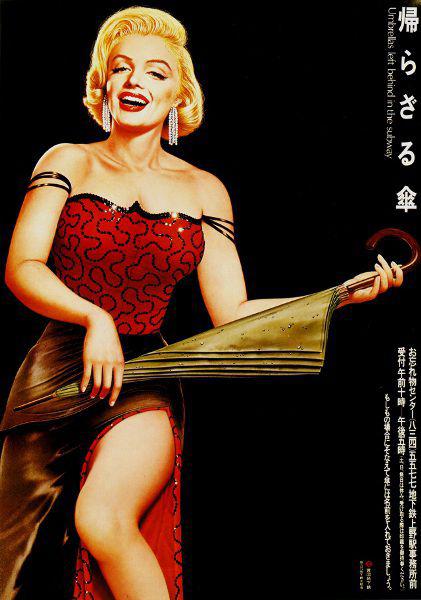
I will stand
July 1979
Uesugi Teppey (Uesugi Teppei), hero of the popular manga "Ore wa Teppey» («Ore wa Teppei»), offers to give way to the elderly and infirm people.
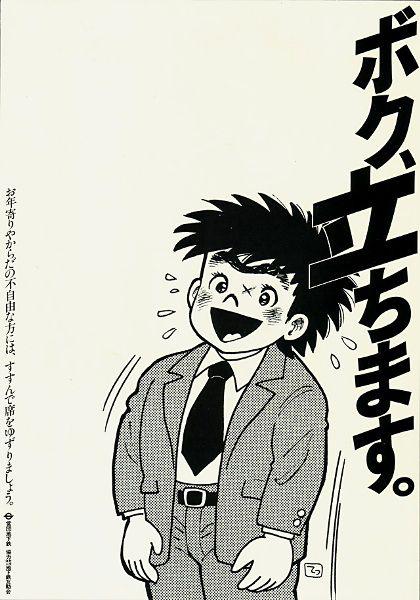
Do not jump on the train
April 1979
This poster offers passengers not to jump on the train at the last moment. Text (か け こ み 禁 寺 is a pun か け こ み 禁止 («Kakekomi Kinsey" - "Do not jump on the train") and か け こ み 寺 (Kakekomi dera - Temple Kakekomi), which has long been known as a haven for married women escaped from their husbands.
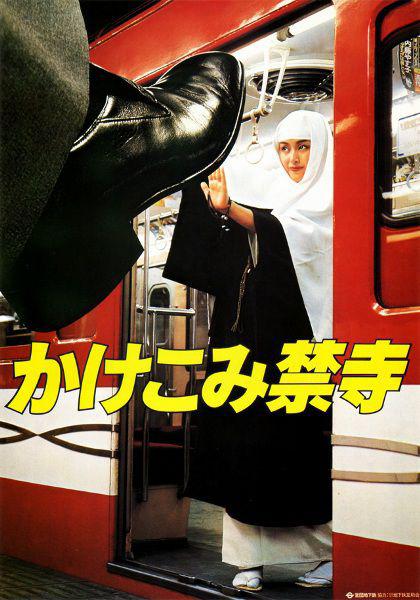
Fully Show your ticket
September 1978
Image Napoleon holding partially hidden ticket should remind passengers to fully show tickets assistant station when passing through the turnstile. Page dictionary in the background looks like a reference to the famous phrase of Napoleon's "word" impossible "is not in my dictionary».

It is human nature to forget
February 1976
This poster reminds passengers that they did not forget their belongings when leaving the cars, showing Astro Boy returning forgotten his hat and umbrella to its creator, Osamu Tezuka (Osamu Tezuka).
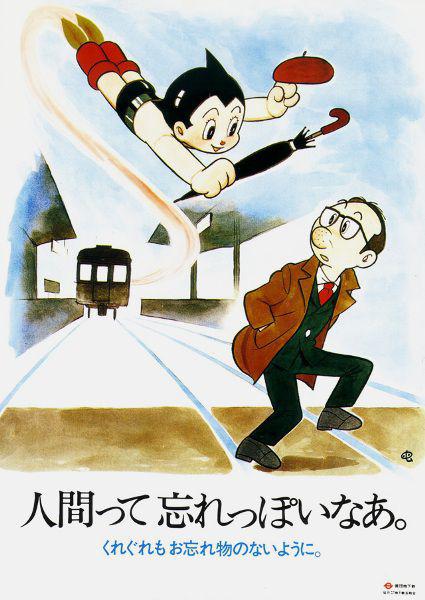
When the bell tolls, it's too late
April 1977
This poster depicting Cinderella runs away from the ball when the clock starts to beat the midnight to remind passengers that it is dangerous to try to jump on the train after the alarm sounded on the administration.
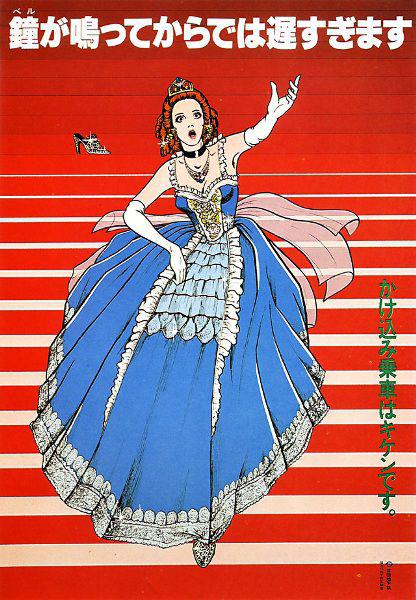
Mary was tired
December 1977
The image of the Virgin Mary with the infant Jesus in her arms calls to give passengers a place for mothers with small children.

Do not smoke in "hours nonsmokers»
October 1980
Monkey from "Journey to the West" warns passengers not to smoke on the platform at the time set by "hours without smoking" (from 7 to 9:30 am and from 5 to 7 pm).

You drank too much
October 1976
The poster depicting a tipsy Santa Claus turns to drunken passengers. Approximate translation of the text reads: "Do I look like Santa Claus, because you drank too much. It is still only October. If you drink, take into account the other passengers ».

Vasureemon
June 1980
Doraemon friendly reminds not to forget the umbrella. The text at the bottom of offers to write your name, address and company name (or school) on your property.

Marcel Marceau
October 1978
Marcel Marceau indicates a gesture to priority seats reserved for elderly passengers and passengers with reduced mobility, pregnant women and passengers with small children.
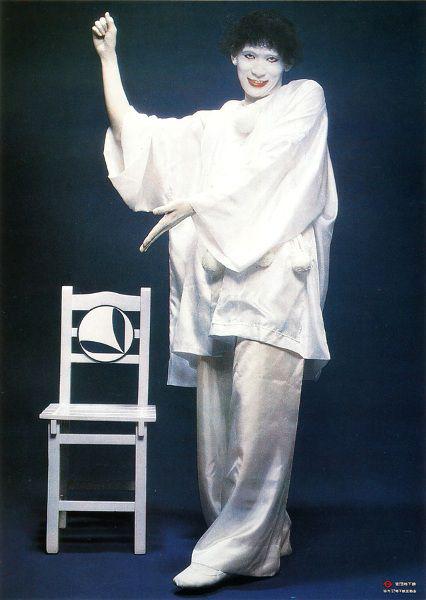
I stepped on chewing gum
March 1980
Image cat stepping on chewing gum, playfully plays with the popular children's song "Neko fundzyatta" ("I stepped on a cat»).
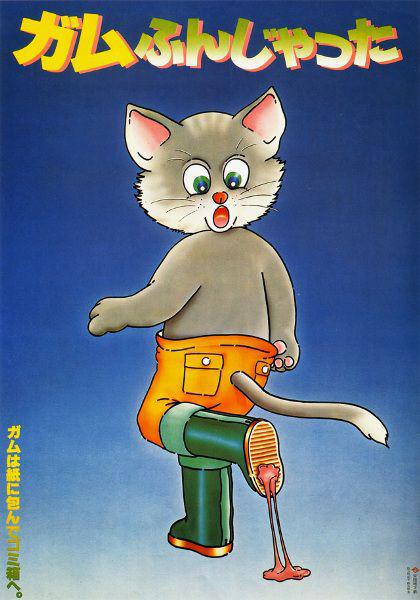
Fully Show your ticket
September 1976
The poster reminds passengers to fully show tickets duty at the station when passing through the turnstile, even if they pass through the turnstile as Superman.
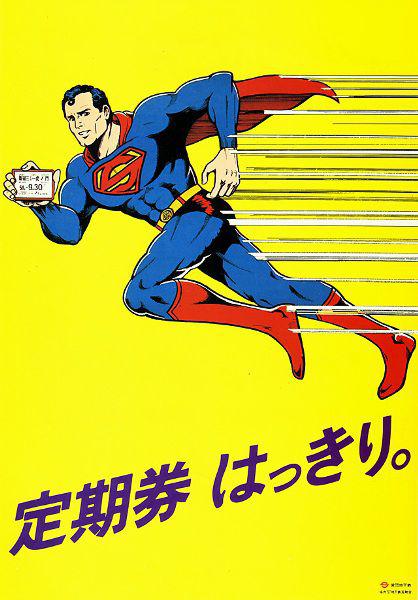
Please turn
July 1977
Poster with melting snowman encourages passengers seated near the window, open it up to let in the cool air inside the car when hot.

Time not smoking
November 1982
Image of John Wayne on the false cover of "Time" reminds not to smoke on the platform during hours without smoking (from 7 to 9:30 am and from 5 to 7 pm)

Source: propagandahistory.ru
First of all, we should note one rather important point: the subway in Japan have never belonged to the state, although not so long ago the railways in Japan were mostly state-owned. Accordingly, the money for the construction and operation of underground never allocated from the state budget, so that the Japanese government has never had a headache about where to get the money, so necessary for the development of the metro.

First Line Ueno-Asakusa was subsequently extended to Ginza, and in 1939 - further to Shibuya. So even before the Second World War there was the Ginza line with 14 stations - from Shibuya to Asakusa. Soon after Tokyo, namely in 1933, the subway was built in Osaka, then the second largest city in Japan. Other contenders for its own subway to the Second World War, Japan has not appeared.
After the war, Japan was clearly not up to the expensive construction, especially after the defeat of Japan. But with the end of the occupation period, the underground began to build on. The next was the Marunouchi line, which was opened in the 50s. She connected the Shinjuku and Ikebukuro through the city center. Laying the entire Marunouchi line with 24 stations it was completed in 1962.
Japanese experts have identified two features of the metro in Japan:
1) Most of the comparatively recently constructed lines is designed in such a way that they can be connected with railway lines, reaching the surface of the earth, and commuter trains entering the city limits, often dive into the ground, using the subway rails.
2) Most subway construction less costly way - from the surface. Top excavated tunnel is closed with steel sheets, which is road transport. It facilitates access to tunnels for repair. But depending on the terrain and tunnels can be routed tunneling shields, displaying the train to the surface, where there is for that vacant lots, and where not - to the elevated overpass. Hence the name "Subway" toward Japan is not always justified.
As of 2003 g. Tokyo was 13 subway lines with total length of 286 km 2, is the third largest metro network in the world.
Nine of the thirteen lines of management in charge of Teito Rapid Transit (Aidan). Aidan - a special corporation established by the government and the municipal government of Tokyo. The other four lines in charge of municipal gov- ernment Tokyo (Toei). In the 23 administrative districts of Tokyo Station 224 - an average of one station per 1, 66 sq. km Capital Territory. Of course, in the central areas of the city, some subway lines converge and intersect, so there are more stations are located close to each other.
Such a large number of lines, typically allowing drive close enough to the desired location. You can change from one subway line to another, or from subway lines to suburban train of private railway companies and "East Japan Railway Company" (JR). This makes commuter trip comfortable, with the only exception that the network configuration and the transitions between the lines is often tortuous and confusing. For example, in a straight line from the station Nagatatё (line Yurakucho) station Akasakamitsuke (Tokyo Metro Marunouchi Line) just 250 meters away, but the transplant from one station to the other will have to walk 500 meters and traverse the platform of another station called Nagatatё on line Hanzomon. Published a number of books with recommendations for re cages with one line to another in this handy, although the complex network of the metro. When traveling in different lines do not always have to change, because many subway trains and suburban trains of different companies provide direct connections to each other lines. For example, the Hanzomon subway line connects to line Tokyu Teng-en Toshi in Shibuya, Chiyoda subway line - the line Dzёban JR in Ayase, and the Toei Mita subway line and Nanboku - to Tokyu Meguro line at Meguro. Direct trains that connect the metro line to railway lines of private companies and JR, relieve many passengers the inconvenience transplant in suburban trips.
I imagine posters promoting good manners, which appeared in the Tokyo subway in 1976 and 1982.
Three monster annoying trains
October 1982
Three monster annoying trains depicted on the poster, it Næss (Nesshii, sleeping monster) Assy (Asshii, monster zakinuvshee his legs) and Simbunsy (Shinbunshii, monster reading a newspaper).

Do not throw chewing gum on the platform
September 1976
Even Superman can not cope with chewing gum thrown on the station platform.

Invader
July 1976
Inspired by Charlie Chaplin film "The Great Dictator", this poster encourages passengers not to take up more space than necessary.

Do not forget your umbrella
June 1977
This poster girl of the upper class agemaki (Agemaki) from the representation of kabuki "Sukeroku» («Sukeroku»), about which said that at her breathtaking beauty men forget everything urges passengers not to forget the umbrella when leaving the car.

Space Invaders
March 1979
This 1979 poster pays tribute to the extremely popular arcade video game "Space Invaders» («Space Invaders»), and calls for the passengers to read newspapers without invading the personal space of other passengers.

Isami-asi (Isami-ashi): Wait for the white line
May 1979
The image of sumo wrestlers, frozen in battle, reminiscent of the passengers that they were waiting for a train in a safe area of the white line.

Do not forget the umbrella
October 1981
The text at the top of the poster - depicting Jesus cluttered umbrellas at the Last Supper - reads: "Kasane-gasane Kami-dan» («Kasane-gasane no kami-danomi»), literally, "I pray to God for help again and again." The poster plays with the similarity of the words "Casa" (Umbrella) and "Kasane-gasane" (again and again).

Pinch, dammit! (Shimatta)
March 1977
This poster warns passengers from getting bags they carry on his shoulder in the closing doors of the train.

Coughs platform
January 1979
Painted in the style of paintings by Henri de Toulouse-Lautrec, the poster entitled "Hoomu de Concon" (coughing on the platform) - warns passengers that they did not smoke on the platforms of stations installed during "hours without smoking" (from 7 to 9-30 and from 5 am to 7 pm). The poster plays with the similarity of the words "Concon" (sound of coughing) and "Cancan" (a French group line dance).

Sleep Home
December 1981
This poster of Doraemon, dressed as Santa Claus, encourages people who are sucking on Christmas or New Year, do not fall asleep on the train.

Not thinker
May 1981
Image version of sculpture by Auguste Rodin "Thinker" with a foot that was cast on the leg, encourages passengers to sit so as not to disturb other passengers.

Kappa
August 1979
Image kappa (water) on the background of a burning cigarette resembles no smoking on the platform at the time set by "hours without smoking" (from 7 to 9:30 am and from 5 to 7 pm). The text at the top of the poster reads "Gaman Gora wa hae but kappa» («Gaman gurai wa he no kappa»), which roughly translates as "Wait - is not that a problem».

Umbrellas, forgotten in the subway
June 1976
This poster with Marilyn Monroe reminds passengers not to forget the umbrella when they go out of the train. The text in the top right corner of the "Kaeradzaru Casa» («Kaerazaru kasa», «Umbrella, which is non-refundable") plays "Kaeradzaru Cava» («Kaerazaru Kawa»), the Japanese name "Rivers without current reversal", a film in 1954 with Marilyn Monroe in the lead role.

I will stand
July 1979
Uesugi Teppey (Uesugi Teppei), hero of the popular manga "Ore wa Teppey» («Ore wa Teppei»), offers to give way to the elderly and infirm people.

Do not jump on the train
April 1979
This poster offers passengers not to jump on the train at the last moment. Text (か け こ み 禁 寺 is a pun か け こ み 禁止 («Kakekomi Kinsey" - "Do not jump on the train") and か け こ み 寺 (Kakekomi dera - Temple Kakekomi), which has long been known as a haven for married women escaped from their husbands.

Fully Show your ticket
September 1978
Image Napoleon holding partially hidden ticket should remind passengers to fully show tickets assistant station when passing through the turnstile. Page dictionary in the background looks like a reference to the famous phrase of Napoleon's "word" impossible "is not in my dictionary».

It is human nature to forget
February 1976
This poster reminds passengers that they did not forget their belongings when leaving the cars, showing Astro Boy returning forgotten his hat and umbrella to its creator, Osamu Tezuka (Osamu Tezuka).

When the bell tolls, it's too late
April 1977
This poster depicting Cinderella runs away from the ball when the clock starts to beat the midnight to remind passengers that it is dangerous to try to jump on the train after the alarm sounded on the administration.

Mary was tired
December 1977
The image of the Virgin Mary with the infant Jesus in her arms calls to give passengers a place for mothers with small children.

Do not smoke in "hours nonsmokers»
October 1980
Monkey from "Journey to the West" warns passengers not to smoke on the platform at the time set by "hours without smoking" (from 7 to 9:30 am and from 5 to 7 pm).

You drank too much
October 1976
The poster depicting a tipsy Santa Claus turns to drunken passengers. Approximate translation of the text reads: "Do I look like Santa Claus, because you drank too much. It is still only October. If you drink, take into account the other passengers ».

Vasureemon
June 1980
Doraemon friendly reminds not to forget the umbrella. The text at the bottom of offers to write your name, address and company name (or school) on your property.

Marcel Marceau
October 1978
Marcel Marceau indicates a gesture to priority seats reserved for elderly passengers and passengers with reduced mobility, pregnant women and passengers with small children.

I stepped on chewing gum
March 1980
Image cat stepping on chewing gum, playfully plays with the popular children's song "Neko fundzyatta" ("I stepped on a cat»).

Fully Show your ticket
September 1976
The poster reminds passengers to fully show tickets duty at the station when passing through the turnstile, even if they pass through the turnstile as Superman.

Please turn
July 1977
Poster with melting snowman encourages passengers seated near the window, open it up to let in the cool air inside the car when hot.

Time not smoking
November 1982
Image of John Wayne on the false cover of "Time" reminds not to smoke on the platform during hours without smoking (from 7 to 9:30 am and from 5 to 7 pm)

Source: propagandahistory.ru
